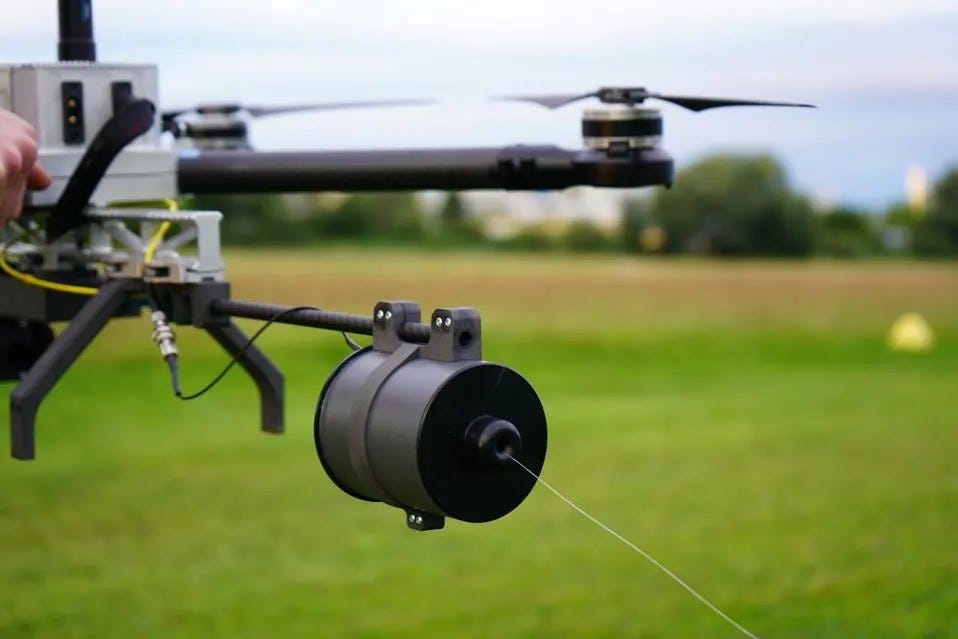Fiber-Optic Drones: Ukraine’s Tactical Shift and Russia’s Not-So-Secret Weapon
Are Russia’s tethered drones a new weapon system here to stay? Or is it a short-term niche solution to Ukrainian jamming?
When I was in high school, I read a chilling and memorable sci-fi novel called Cold Allies by author Patricia Anthony.
Released in 1993, the book depicts a futuristic world war between nations while the combatants come to terms with alien visitors who decide that global war is the best time to stop by and say hi.
Although the author’s pacing was inconsistent, the writing rough around the edges, and the aliens poorly defined, I still remember this book distinctly for one reason: The American way of warfighting was completely remote-controlled.
Keep in mind, this was the roaring 90s — we didn’t have Reaper drones or Global Hawks in wide circulation yet, so the fact that one of Anthony’s main characters controlled a ground-based combat drone with virtual reality goggles was completely fresh.
(This book actually made me want to buy the Nintendo Virtual Boy — until I tried a demo in Toys R Us in 1995)
Fast forward to today, and FPV drones on the battlefield are very much a reality.
Ukraine invented modern drone warfare.
In just one week in April 2024, Ukraine's "army of drones" destroyed 116 Russian armored vehicles, 30 tanks, and 113 special military vehicles.
Drones' battlefield utility became so obvious, that Russia quickly copied the Ukrainian drone strategy.
Once electronic warfare ratcheted up on the battlefield, Russia tried to find a way to harden their drones from Ukraine’s EW.
So what’s all the hubbub about fiber optic drones?
A couple of years ago, the idea of drones tethered to their operators by fiber-optic cables would’ve been, if not laughed off the battlefield, definitely looked at with a wary eye.
Today these wire-controlled UAVs are adding complexity to the drone cat-and-mouse game, especially in Kursk. Once deemed unnecessary by Ukraine’s Armed Forces, fiber-optic drones have now become a must-have—thanks largely to Russia’s ability to field them effectively and Ukraine’s increasingly aggressive need to counter them.
Russia’s fiber-optic drones, let’s call them the flying bricks with cables, have proven to be a nasty surprise. Unlike traditional FPV (First-Person View) drones, which rely on radio signals to communicate with operators, these drones are connected by long, lightweight spools of fiber-optic cable that unwind mid-flight.
The result? An unjammable control system immune to even the best electronic warfare (EW) tech Ukraine can muster.
Russian Telegram channels have been gleefully pointing out the effectiveness of these drones. In early January, during Ukraine's offensive in Russia’s Kursk Oblast, Ukrainian EW systems reportedly took down every Russian drone—except the fiber-optic ones.




